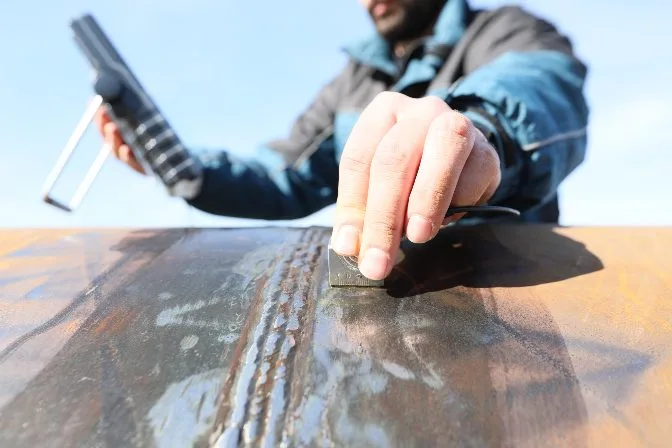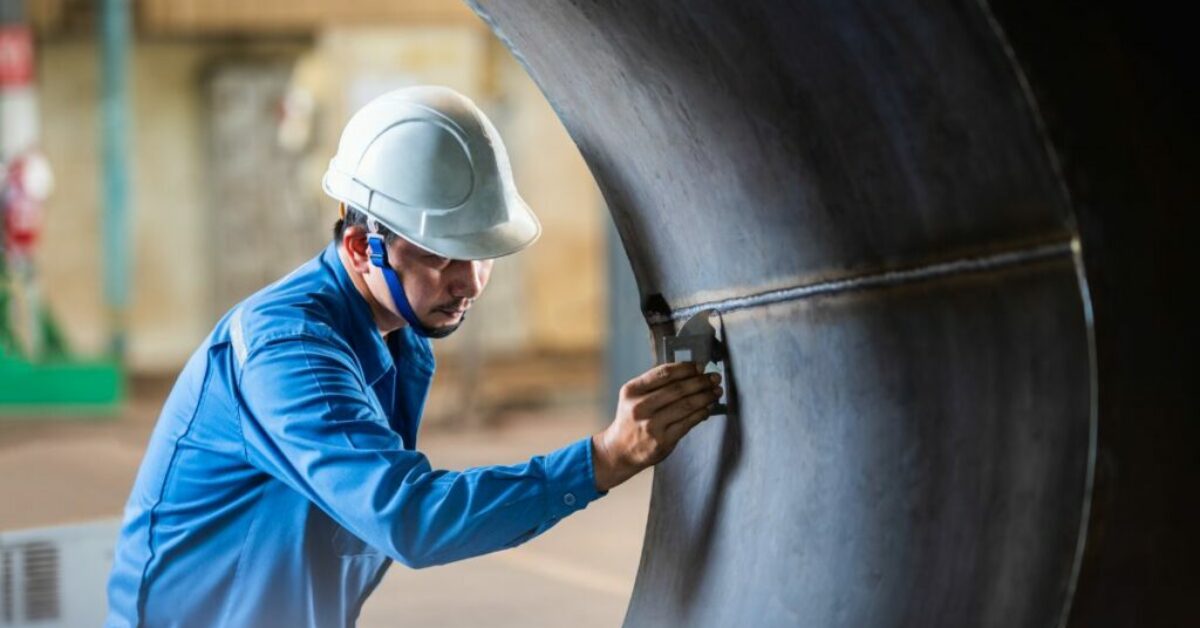
Discovering the Different Methods and Specifications of Welding Examination for Getting Conformity and Reliability in Design Applications
The importance of welding assessment in design applications can not be overemphasized, as it serves as an important secure for guaranteeing structural integrity and conformity with sector requirements. Various approaches, consisting of visual evaluation and advanced non-destructive testing strategies, supply crucial understandings right into the high quality of welds.
Significance of Welding Examination
Welding examination plays a vital role in ensuring the honesty and safety of welded frameworks. This process entails the methodical evaluation of welds to verify conformity with predetermined criteria and requirements. The relevance of welding assessment can not be overemphasized, as it works as a secure against prospective failures that might result from insufficient welding methods. Through extensive examination, issues such as cracks, gaps, and poor blend can be determined early, thereby protecting against devastating failings that may cause structural collapse or security dangers.
Moreover, welding assessment is essential for keeping quality guarantee throughout the welding procedure. It ensures that the welds satisfy the required mechanical and physical residential properties required for their desired applications. Normal inspections also foster a society of liability and continuous enhancement within welding procedures, encouraging adherence to ideal techniques and industry standards.
In managed markets such as production, construction, and aerospace, rigorous welding assessment methods are mandated to abide with lawful and safety and security demands. Eventually, reliable welding evaluation not only secures human life and building however also boosts the long life and dependability of bonded frameworks, making it an indispensable element of design and building and construction.

Common Welding Examination Methods
A selection of assessment methods are utilized to assess the top quality and integrity of welds, each tailored to identify certain sorts of problems. Amongst the most common methods is visual inspection, which includes a detailed assessment of the weld surface to recognize noticeable imperfections such as fractures, damages, and insufficient combination. This approach is usually the initial step in the inspection process due to its simplicity and cost-effectiveness.
One more widely made use of approach is radiographic assessment, where X-rays or gamma rays permeate the weld to reveal interior flaws. This strategy is specifically efficient for discovering porosity and additions within the weld product. Ultrasonic screening employs high-frequency audio waves to recognize inner defects, offering an in-depth analysis of the weld's honesty.
Moreover, magnetic bit inspection is made use of for ferromagnetic materials, permitting the detection of surface area and near-surface defects by observing and using magnetic areas fragment patterns. Color penetrant testing involves using a fluid dye to the weld surface, disclosing cracks and various other suspensions upon inspection (Welding Inspection Milwaukee). Each of these methods plays an important duty in guaranteeing weld top quality and compliance with industry standards
Non-Destructive Examining Strategies
Non-destructive screening (NDT) strategies are important tools in the evaluation of weld high quality, allowing examiners to review the honesty of bonded joints without triggering damage to the materials. Various NDT methods are employed to recognize possible flaws, guaranteeing that welds satisfy the needed requirements for safety and security and efficiency.
One of one of the most widespread strategies is ultrasonic screening (UT), which utilizes high-frequency audio waves to identify inner imperfections such as fractures or voids. Radiographic testing (RT) employs X-rays or gamma rays to generate photos of welds, exposing any kind of discontinuities within the product. Magnetic fragment testing (MT) works for discovering surface area and near-surface problems in ferromagnetic materials with the application of electromagnetic fields and contrasting fragments.
Fluid penetrant testing (PT) is one click site more extensively made use of technique that includes applying a dye to the surface area of the weld, which seeps right into any cracks, making them visible under ultraviolet light. Each of these approaches provides distinct advantages and restrictions, and the selection of a proper strategy is critical to achieving precise analyses of weld stability. Inevitably, the execution of NDT techniques significantly adds to the reliability and safety of engineering applications.

Regulative Requirements and Compliance
In the realm of welding assessment, adherence to governing standards pop over here and conformity is vital to make sure the safety and dependability of bonded frameworks (Welding Inspection Milwaukee). Different organizations, consisting of the American Welding Culture (AWS), the American Culture of Mechanical Designers (ASME), and the International Organization for Standardization (ISO), have actually developed standards that regulate welding practices and examination procedures. These standards supply a framework for high quality guarantee, laying out the necessary credentials for examiners and the techniques for examining weld honesty
Compliance with these regulatory standards not just boosts the architectural stability of welded settings up however also alleviates dangers connected with failures, which can have disastrous consequences. Evaluations need to be carried out utilizing specified procedures, including aesthetic, ultrasonic, and radiographic approaches, to guarantee that welds satisfy defined standards.
Moreover, adherence to these criteria is usually called for by law, especially in markets such as construction, aerospace, and manufacturing. Normal audits and certifications are important to keep conformity, thereby promoting a culture of safety and top quality within organizations. Eventually, governing criteria and conformity work as the foundation of reputable welding examination methods, ensuring that engineered structures satisfy both efficiency assumptions and safety requirements.
Ideal Practices for Welding Assessment
While maintaining compliance with regulative standards is critical, executing finest methods for welding inspection even more boosts the safety and honesty of bonded structures. Reliable welding assessment begins with thorough preparation, that includes understanding the certain requirements of each job and guaranteeing examiners are well-trained in applicable methods and requirements.
Using an extensive inspection checklist aids to guarantee all crucial aspects are analyzed, such as weld size, infiltration, and aesthetic problems. Non-destructive screening (NDT) techniques, such as ultrasonic or radiographic screening, ought to be utilized where proper, supplying a much more thorough evaluation of weld high quality without jeopardizing the try this web-site stability of the materials.
Documentation plays a substantial role in finest methods; maintaining exact documents of assessments, including pictures, test results, and conformity reports, ensures responsibility and facilitates future analyses. Furthermore, promoting a society of open interaction between welders and examiners can cause early identification of prospective concerns, advertising instant rehabilitative actions.
Conclusion
In recap, the execution of extensive welding examination methods and adherence to established standards are necessary for making certain conformity and reliability in design applications - Welding Inspection Milwaukee. Strategies such as aesthetic inspection, radiographic screening, and ultrasonic testing act as critical devices in identifying flaws and keeping quality assurance. By fostering a culture of liability and quality, organizations can enhance the integrity and longevity of bonded structures, eventually adding to the security and efficacy of design tasks
Numerous techniques, consisting of aesthetic assessment and progressed non-destructive screening techniques, provide vital insights right into the high quality of welds.Welding assessment plays an important duty in ensuring the stability and safety and security of bonded frameworks.A variety of examination approaches are used to examine the quality and integrity of welds, each tailored to detect details types of flaws.Another widely used technique is radiographic inspection, where X-rays or gamma rays permeate the weld to expose internal flaws.In the realm of welding inspection, adherence to governing criteria and compliance is paramount to ensure the safety and security and reliability of bonded frameworks.